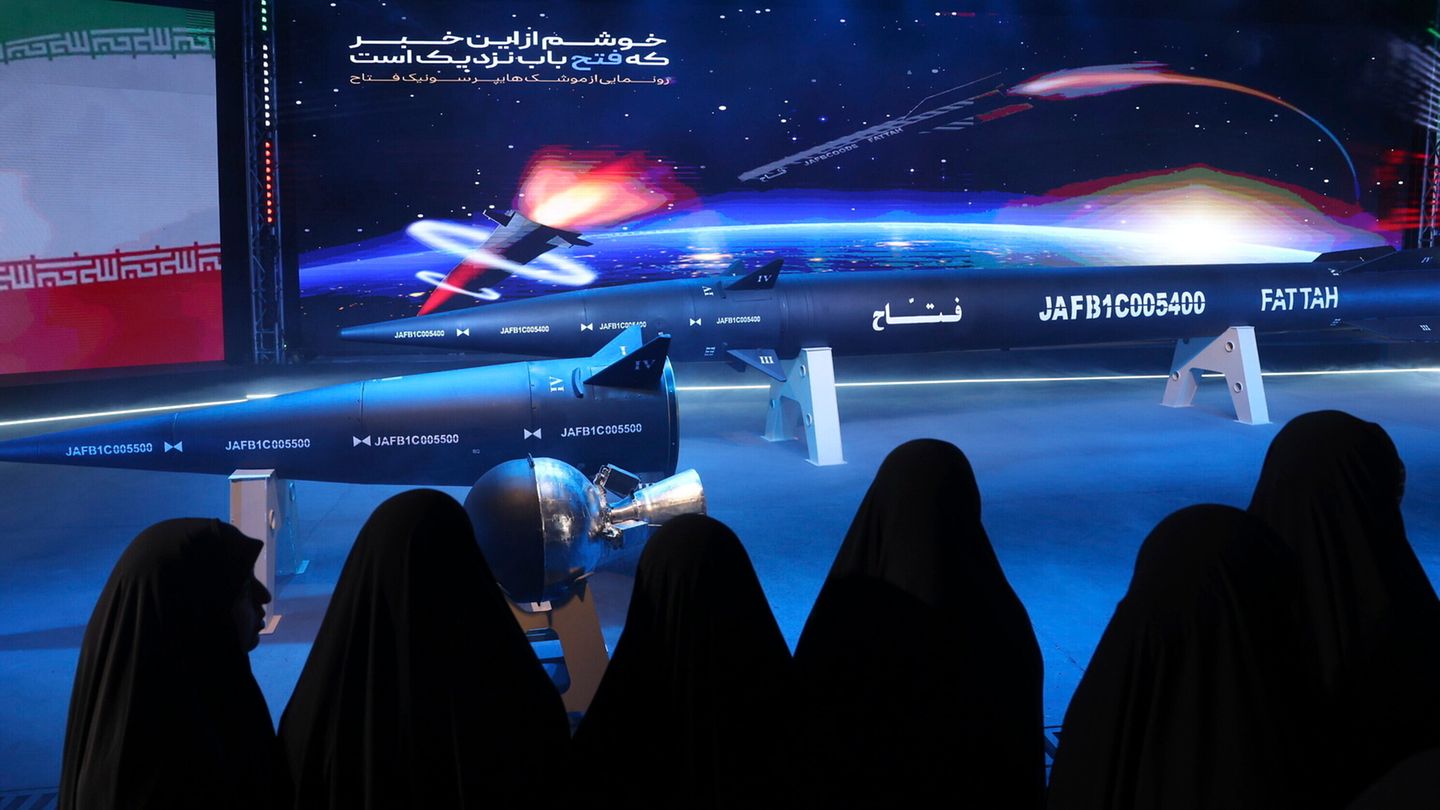16,000 kilometers per hour
This makes Iran’s hyperschallrakets so dangerous
Copy the current link
Add to the memorial list
Iran claims to have used hyperschallrakets in his attacks on Israel. The extremely fast missile is a big challenge for air defense.
Tehran, according to his own information, fired “Hyper Schallrakets” on Israel on Wednesday night. In the “eleventh wave” of the attacks on Israel, ballistic hyper -shall rockets of the type “Fatah” (“conqueror”) were fired, the Iranian revolutionary guards said in the early morning on Wednesday in a state -like Iranian broadcaster.
Israel had launched a major attack on Iran on Friday night, including nuclear facilities and military facilities in the country and killed numerous rank -high military. Iran reacted with retaliation and has since attacked Israel with rockets and drones.
Hyperschall rocket with a range of 1400 km
The state-of-the-art hyperschallraket weapons system was only presented to the public two years ago.
The rockets, which are also called “Fatah inputs”, are a building block when expanding the Iranian rocket arsenal. “The precision-shaped ‘Fatah -‘hyperschallrakete has a range of 1400 km and is able to penetrate all defense shields,” said Amirali Hajizadeh, head of the Aerospace team of the Revolutionary Guards, at the presentation of the system. Allegedly, the missiles reach at least 13 times the speed of sound, i.e. around 16,000 kilometers per hour. After shooting, people in the target region only remained a few minutes to get to safety. State television celebrated a “big generation jump in the field of rockets” at the performance.
However: that hyperschallrakets cannot be intercepted – as the Iranian regime suggested – is not true. But the defense is extremely difficult by the high speed: it enormously reduces the area of activity of a defense battery and squeezes it together into a flat lens. Simply put, the defense can intervene if the hyperschall weapon moves to it. When flying past in a tangent, the effective area shrinks heavily, the weapon moves away from the defense position it becomes impossible to intercept the rocket. Even if the hyperschall rocket can be intercepted, it becomes much more complex to protect larger areas from it.
The maneuverability of the Iranian model also makes it difficult for air defense: the “fatah input body” is mounted on a ballistic medium-range rocket that brings your head into the atmosphere. The “Fatah” glider should be able to maneuver and can thus avoid the air defense systems.
Notice of the editorial team: This article was first published in October 2024 and was updated in view of the current developments.
With dpa and AFP material
Source: Stern
I have been working in the news industry for over 6 years, first as a reporter and now as an editor. I have covered politics extensively, and my work has appeared in major newspapers and online news outlets around the world. In addition to my writing, I also contribute regularly to 24 Hours World.




